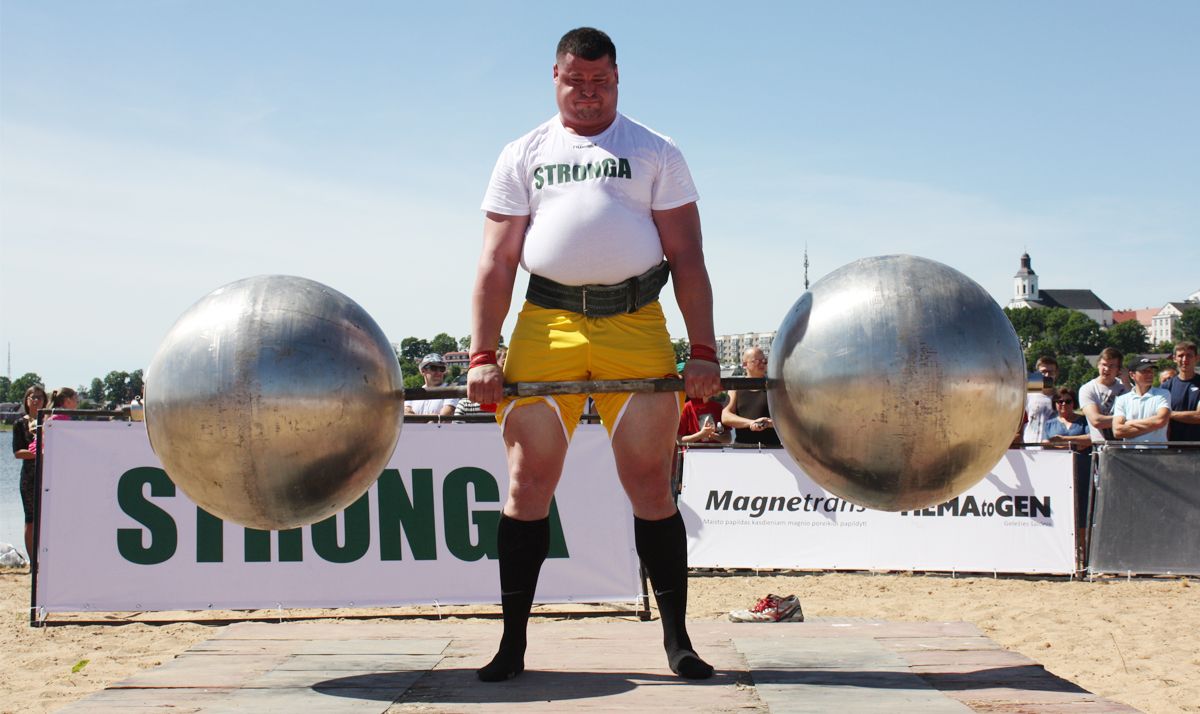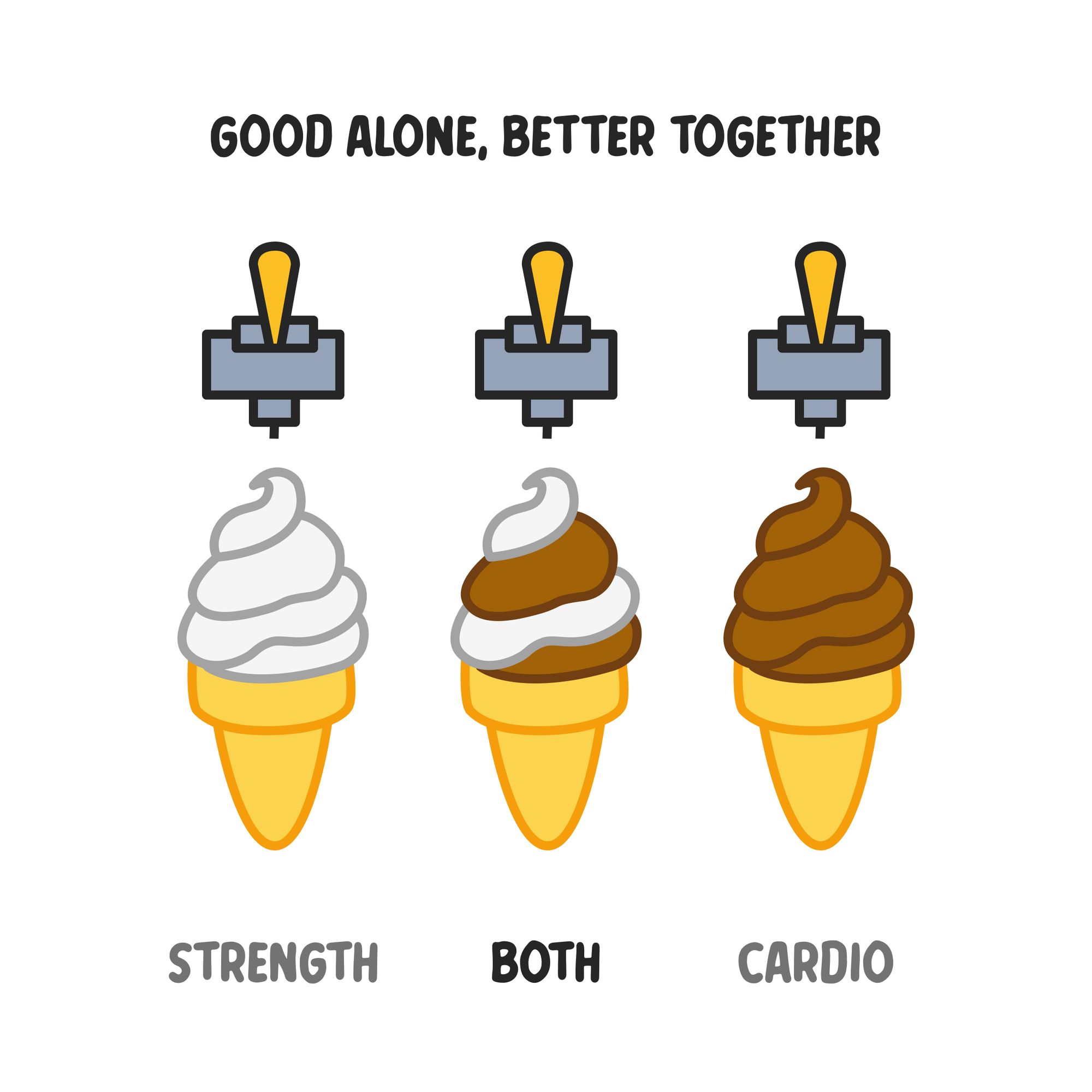The case for combining strength training and cardio

Has anyone ever told you that you should avoid cardio, because it "kills your gains"? Or on the contrary, that you should avoid lifting, because it "makes you bulky" and therefore slows you down?
The idea that doing strength training alongside aerobic training limits your progression in both is known as the interference effect. It is thought to occur because the two types of exercise drive different responses in the body. Strength training stimulates muscles to grow larger and stronger and cardiovascular training improves the ability of muscles to generate small amounts of energy over a long period of time. It's expensive for the body to develop in either of these ways. So when both types of exercises are done together, the body must divide its resources between them, potentially limiting the benefits of both.
Does this mean that you should only focus on one at a time to get highest payoff for your time and energy? Not necessarily. But before we get into that, we need to step back and examine the motivation behind your fitness goals.
What do you hope to get out of your training?
If your goal is to be the strongest person you can be, then you don't want to spend much time running on the treadmill. If your goal is to win an Ironman race, then you don't want to spend much time in the weight room.
Specialized performance goals demand specialized training and many athletes need to funnel their focus into a single area in order to be at the top of their sports.

However, 99% of you won't identify with either of those archetypes and probably just want to live your life in good health. For that goal, a more generalized exercise plan is by far the best choice.
General Physical Preparedness (GPP) is a term used by trainers that describes an individual's ability to perform a wide range of physical activities, and it's widely considered one of the most important aspect of overall quality of life. Having high GPP makes day to day tasks like carrying the groceries and walking up the stairs easy to perform and helps people maintain their mobility and independence into old age.
Having a balance of both strength and cardiovascular fitness is critical to GPP. Strength training not only helps you lift heavy objects when life demands it, but it also increases bone density, improves joint health, and gives you a lean and toned build. Cardio, as its name implies, bolsters your cardiovascular system, reduces the risk of heart disease, and improves your ability to endure in activities that last a long time.

The bottom line is, being a well-rounded athlete will enable you to take conquer a wide variety of challenges and also take advantage of everything life has to offer. Your car broke down in the middle of the highway? No problem, you are strong enough to push it to a safe spot on the shoulder. Your friend invited you to an impromptu 10 mile weekend hike? You're ready for it! Life is unpredictable, but being trained in both strength and endurance prepares you for it all.
The interference effect can be mitigated by deliberate programming.
Now that we're on the same page, let's get back to the interference effect. So we see the benefits of working on both our strength and our cardio fitness at the same time ("concurrent training"). But given that they are still opposing goals for our bodies, is that even possible?
In the 80s, exercise scientists used to believe that cardio drastically limited strength gains for virtually anyone, beginners and advanced trainees alike. But more recent evidence has proven that claim invalid. In actuality, the interference effect is only an issue for certain people and only when strength and cardio work are performed in the exact same session. Separating the two by as few as 3 hours diminishes the interference effect to the point where it isn't an issue for most people.

Here is some practical advice on how to incorporate concurrent training in your own fitness program:
- Prioritize one type of exercise at a time. For example, you may want to prioritize cycling in the spring and summer months when it is nice outside, and weightlifting in the colder winter months. When you have an clear sense of priorities in mind, you can at the very least ensure that you're putting in enough time to succeed at your "primary" sport. When you have a busy week at work, you can reduce the sessions for the exercise modality that you care less about at that particular time.
- Separate strength and cardio sessions as much as possible. By doing strength and cardio on different days or at least 3 hours apart on the same day, you can prevent interference between the two types of training and perform optimally in each session. It's also a good idea to alternate between strength with cardio as much as possible, so you can maximize the time you have for recovery demands specific to each exercise type.
- Recover adequately with proper nutrition and sleep. Poor sleep, high stress, and under-eating can all significantly diminish your capacity to recover from training. If your lifestyle is not conducive to adequate recovery, you may not be able to handle simultaneous endurance and resistance training. Listen to your body, as sometimes it is more valuable to rest up and eat well rather than to push yourself longer and harder in your workouts.
Most people can find success in concurrent training when following these strategies. I am a huge proponent of incorporating both types of exercise in your training plans, as it is a surefire way to optimize your overall physical fitness and well-being.



